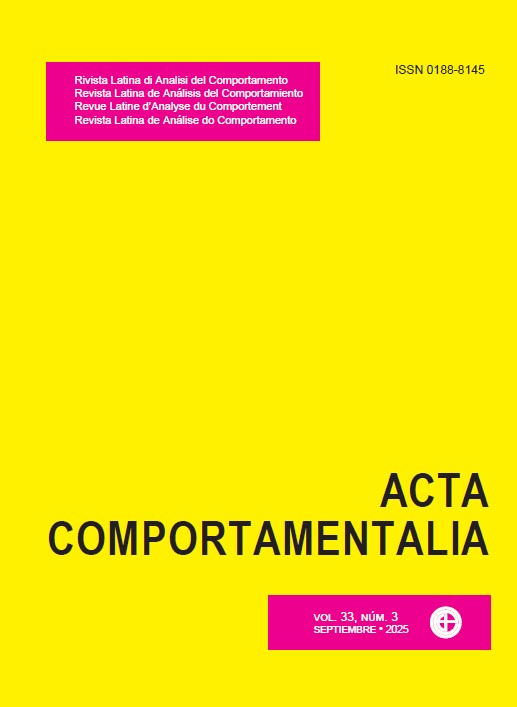Effect of Using Corrective Feedback on Police Approach Behavior
Keywords:
performance management, behavior analysis, police approach, feedback, trainingAbstract
Military Police is a public institution that uses coercion to ensure law and order. A common approach by military police officers is the “collaborative person-on-foot” approach, where one officer conducts the suspect search while another provides security. Improper execution of this approach can pose risks to the officers, suspects, and bystanders. We aimed to assess the effect of corrective feedback on behaviors in the “collaborative person-on-foot police approach”. The study used a singlesubject experimental design with an A-B-A-B reversal type in nine steps. Two officers who had been active partners on patrol for over two years participated. The independent variables were, in case of error in the approach, corrective feedback, and presentation of the correct behavior and in case of success, feedback of the success followed by praise that acted as reinforcement. The procedure involved seven stages: 1) experiment instruction, 2) pilot study, 3) baseline measurement, 4) intervention one, 5) return to baseline, 6) intervention two, 7) follow-up. At the end, a social validation interview gathered participants’ opinions on the study and its practical applicability. Results showed behavioral variability in baseline and intervention phases for both participants, with alternating errors and successes in approaches. Participant 1 achieved approximately 40% accuracy in baseline and 90% in intervention one, while Participant 2 had about 45% accuracy in baseline and 90% in intervention one. There was a substantial increase in target behavior accuracy from intervention one, reaching 100% in intervention two, and maintained in follow-up. In interviews, both officers approved the procedure and believed it could be used in Military Police training. We conclude that the intervention was effective. Corrective feedback increasing correct target behaviors, suggesting potential inclusion of this model for periodic police evaluation and training.
Downloads
Downloads
Published
How to Cite
Issue
Section
License

<a rel="license" href="http://creativecommons.org/licenses/by-nc-sa/4.0/"><img alt="Licencia de Creative Commons" style="border-width:0" src="https://i.creativecommons.org/l/by-nc-sa/4.0/88x31.png" /></a><br />Este obra está bajo una <a rel="license" href="http://creativecommons.org/licenses/by-nc-sa/4.0/">licencia de Creative Commons Reconocimiento-NoComercial-CompartirIgual 4.0 Internacional</a>.






